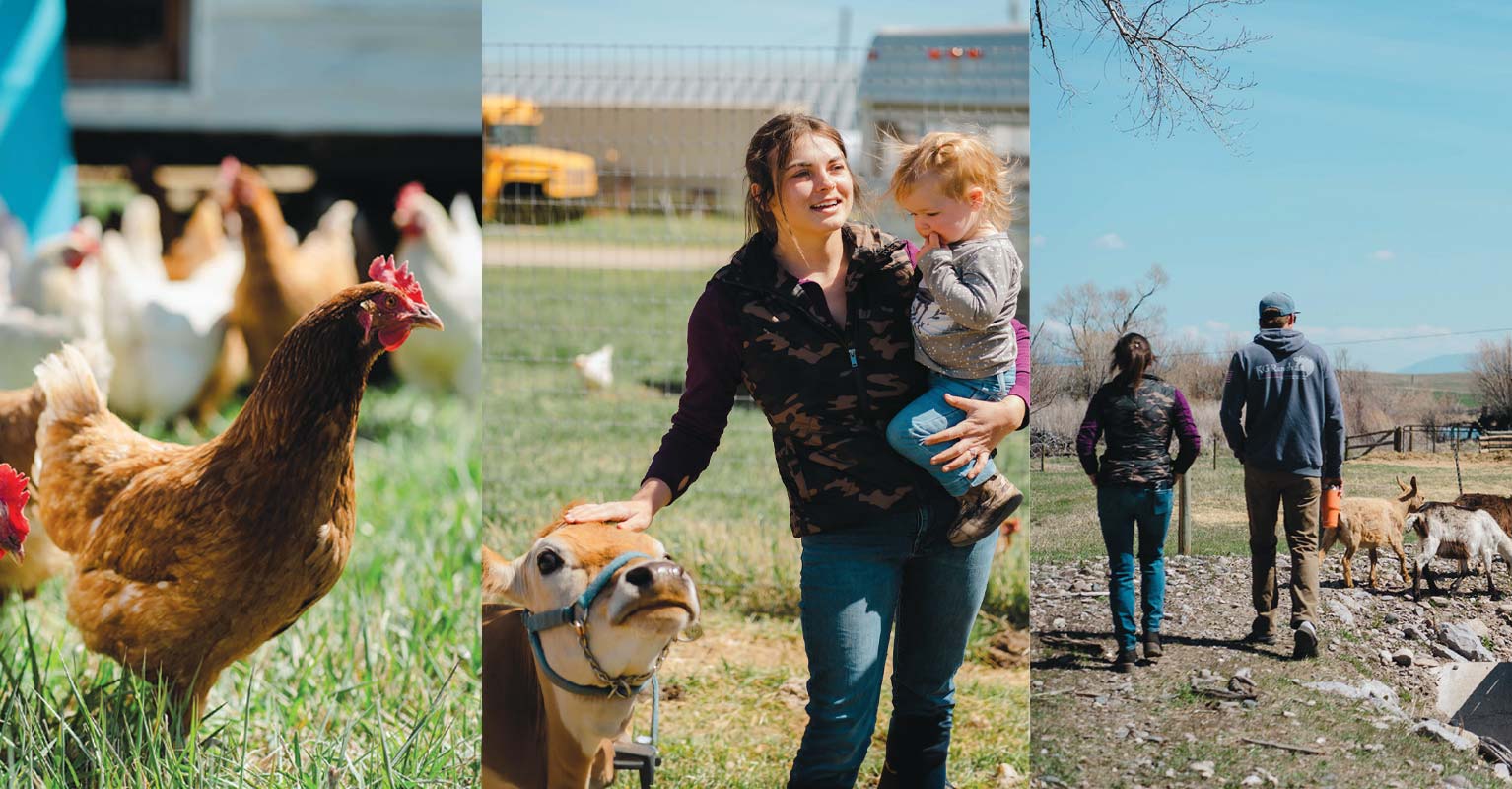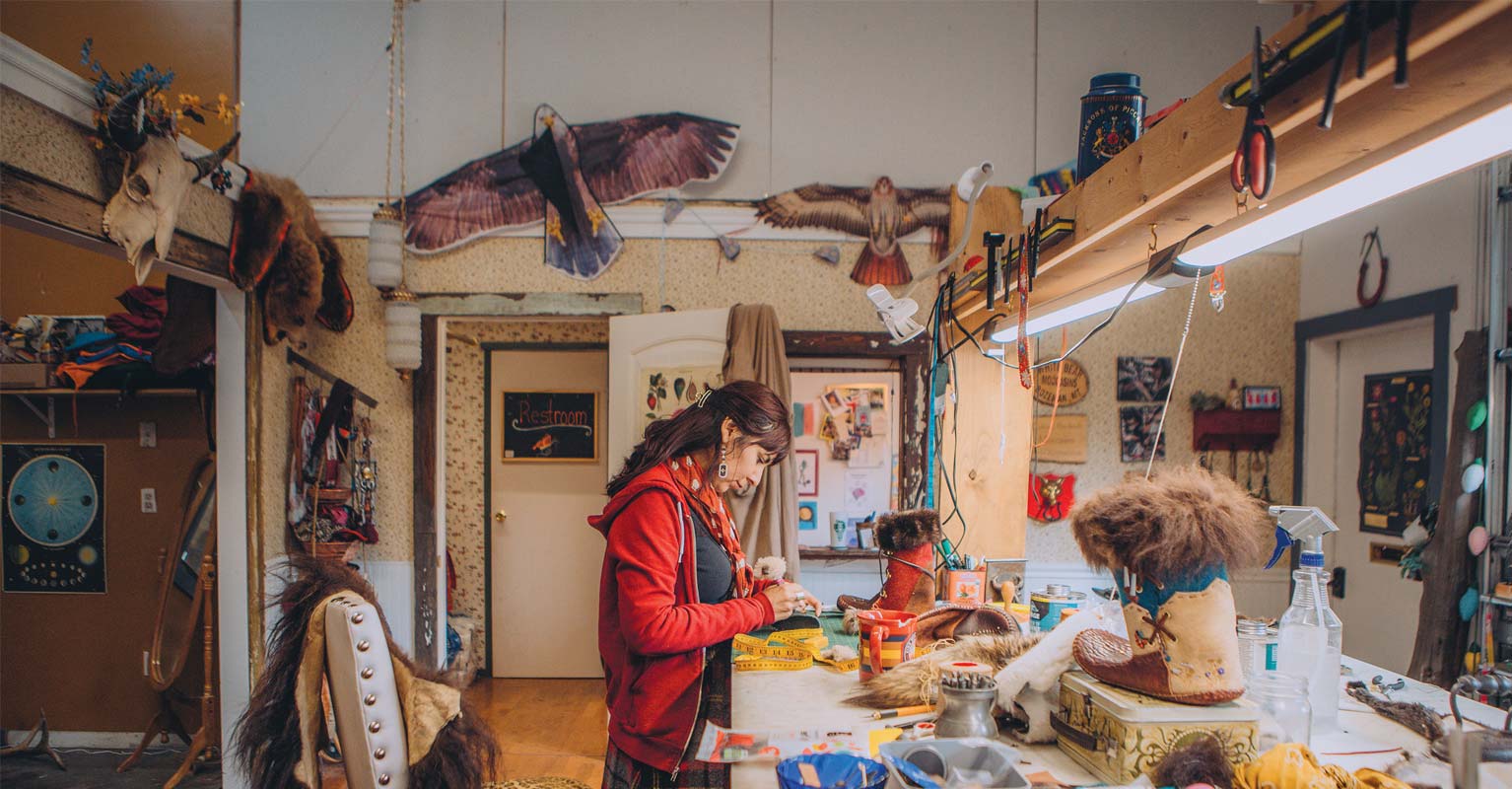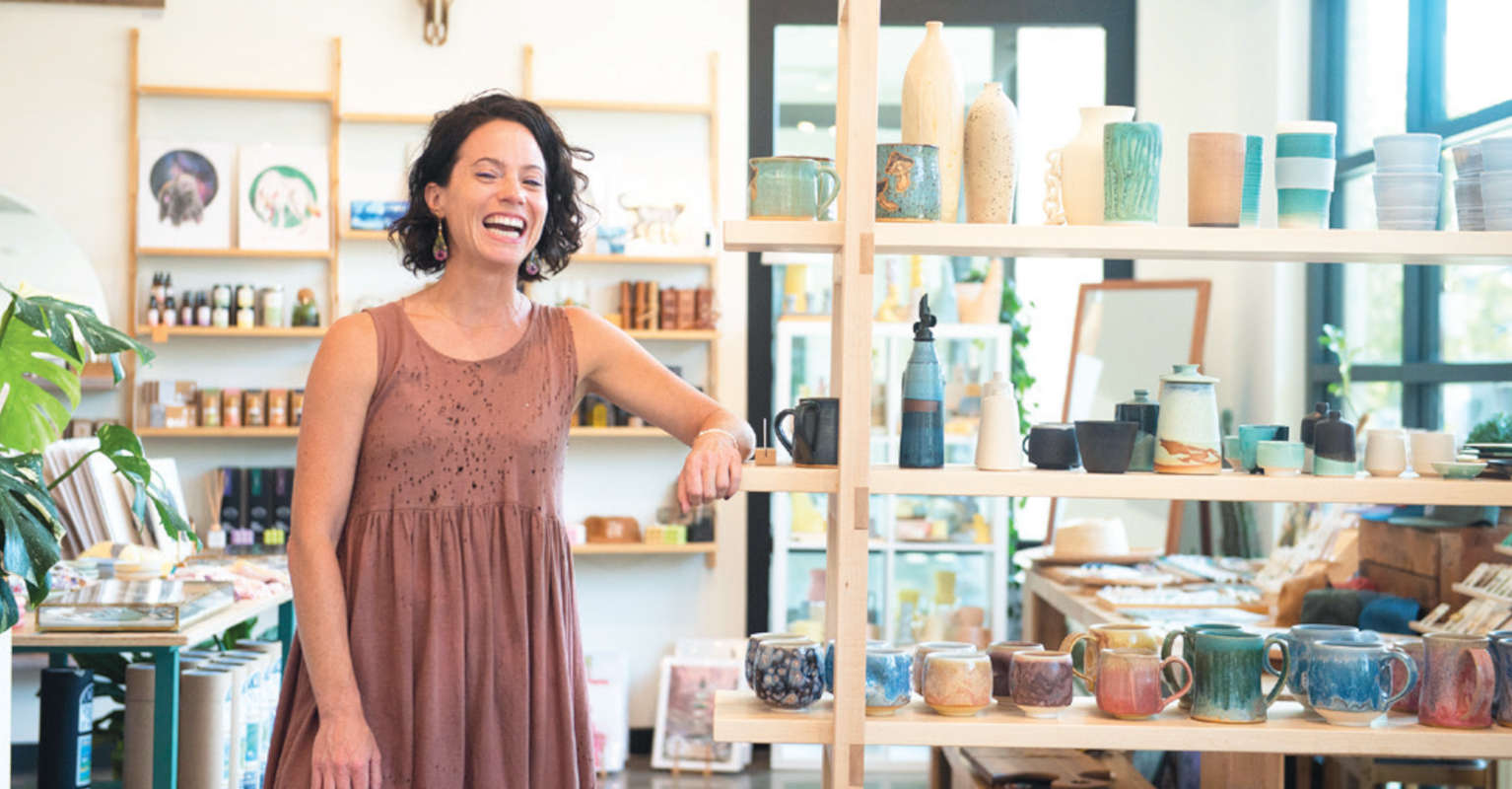The teas are exquisite. The brewing protocols precise. Backed by years of research in restaurants, labs, and wild tea forests, Noah ten Broek and Selena Ahmed are bringing exceptional teas to Bozeman with the Loboh Tea line of Shoots & Roots Bitters. I caught up with them at the end of October, masked up and distanced, to talk tea and the road that brought this dynamic couple to Bozeman.
THE FIRST INFUSION
“Tea is the second-most-consumed beverage in the world, after water,” says ten Broek, as he discards the first infusion into the tea table. We’re enjoying an oolong tea from a tea garden in the Wuyi Mountains of Fujian, China. It’s mild in both character and caffeine, ideal for late afternoon, he explains. Ten Broek has worked in restaurants since he was thirteen and is no stranger to the subtleties of flavor. Today, he’s following the gong fu cha dao (“way of tea” with “effort,” “work,” or “skill”) method of tea preparation, a protocol described over a thousand years ago in Lu Yu’s Cha Jing (Classic of Tea). The discarded first infusion opens up the dried leaves. Further infusions—up to ten—slowly release the flavors and beneficial phytochemicals
Ahmed, ten Broek’s partner, joins us while we wait for the second infusion. She’s carrying Tea Horse Road: China’s Ancient Trade Road to Tibet. The history of tea is fascinating, she says as she flips to the map, and particularly the history of tea from Pu’er in the Yunnan region of southwestern China, where she has spent years studying ancient tea forests known as shade-grown tea gardens or tea agroforests. Tea from Yunnan was carried along the Tea Horse Road to Tibet, where it served as both a dietary staple and currency for war horses that were used in Chinese military campaigns.
“Tea is the plant that’s carried me through my career,” says Ahmed, associate professor of Sustainable Food Systems at MSU. After earning a degree in ethnobotany in England in 2004, Ahmed returned home to New York to pursue doctoral research exploring the biology and phytochemistry of the tea plant, Camellia sinensis. There, she partnered up with two other botany students—Rachel Meyer and Ashley Duval, both working currently at universities in California—on a science outreach project.
“The goal of our research was [and is] preserving biocultural diversity,” Ahmed explains. The three women had a simple idea: Teach people botany through their taste buds. They raised funds and found support through an incubator commercial kitchen that supports the startup of women and minority entrepreneurs. Soon, their outreach efforts turned into a company that supplied bitters to cocktail bars in New York City, and Shoots & Roots Bitters was born.
THE SECOND INFUSION
Ten Broek is precise with the timing of the second infusion. He hands me a small glass cup across the tea table and I pull my mask down to inhale. Earthy and floral: rich. The book in front of me, Tea Horse Road, which Ahmed co-authored with photographer Michael Freeman, was born out of her doctoral work. Pu’er was one of her study sites.
In 2014, ten Broek accompanied Ahmed on a research trip to the shade-grown tea gardens in the Bulang Mountains of southern Yunnan. There, families that have lived on the mountainsides for generations harvest tea from tea forests that contain fifteen to thirty varietals of the Camellia sinensis plant. The harvested leaves are rolled by hand, then pan-fried to slow the fermentation. Green tea fermentations are relatively quick; black tea ferments much longer. Either way, the tea from Pu’er and the nearby mountains is sold for thousands of dollars per kilo in Hong Kong and Beijing. Globally, the tea market is valued at $50 billion.
Ten Broek was captivated by the tea they drank during their stay. They weren’t drinking the teas destined for expensive urban markets, but rather the discarded yellow leaves.
“You can brew five different cups of tea, and you’d think it comes from different plants.” As with wine, both the landscape and the processing methods profoundly influence the flavor of tea. Ten Broek brought some home and began to tinker with the brew protocols. Six years later, he is still experimenting. Now, he sources teas from sustainable tea forests all over the world, shares tea with friends, and sells those he likes best as the Loboh Tea line of Shoots & Roots Bitters.
THE THIRD INFUSION
The infusions of the gong fu cha dao gradually extract the flavor. I find the third infusion slightly more floral, less bitter. A pleasant companion to the conversation and fading afternoon. Bitters are often associated with cocktails, Ahmed explains.
But Shoots & Roots Bitters defines them more broadly than that: botanical infusions that extract the flavor and medicinal attributes of plants. Tea is a bitter extracted with hot water. “Each bitter tells a story of place,” Ahmed says. Her research over the past decade has focused on the biology and phytochemistry of the tea plant and beverage, and also tea’s story of place. She has studied the farmers growing the tea, the effects on biodiversity of sustainable wild tea forests, and the health outcomes associated with drinking tea.
In her role at MSU, Ahmed’s research horizons have expanded beyond tea. She’s the principal investigator on a project with the Confederated Salish and Kootenai Tribes to advance healthy and sustainable food environments. She studies effective conversion of household food waste into biofertilizer, and the effects of climate change on sugar maples.
But though her research program has diversified, she says tea has been a vehicle for her research.
Tea is now a driving force behind Shoots & Roots Bitters, too, though ten Broek and Ahmed don’t advertise much. Ten Broek describes the company as “a side hustle. It’s an act of love.” They only design tea lines for those who ask. Their first major customer was Little Star Diner. Then Treeline, recognizing the synergy between the two companies’ brewed beverage philosophies, asked Shoots & Roots Bitters to design their entire tea line. Now, Loboh teas can be found at Blackbird Kitchen and Essy’s too.
“It’s not just about sourcing and curating the tea,” ten Broek says. “We’ll get one tea in 2019 and brew it one way, and in 2020, brew it another way.” Keenly aware of flavor, ten Broek draws on his experience in the restaurant and hospitality industries to develop brewing protocols optimized for restaurants and coffee shops.
“There is a whole dialogue in a cup of tea,” Ahmed says thoughtfully as I near the end of my cup. Later, she follows up on this sentiment. “We hope to spark a deeper connection to the food system—to the environment and to each other— through sensory journeys during the ritual of brewing and drinking tea.”
She says this ritual is celebratory and that it brings healing, joy, and mindfulness in a way that makes us more present. “When we increase our awareness of what we are drinking, we increase our awareness of the environmental and management conditions involved in its production.
“Ultimately,” she adds, “we want to inform sustainable food choices for a more sustainable community and planet. As Noah says, ‘Eating and drinking are among the most intimate acts.’ We want you to consume well.”




